#Soil Solar energy
Text
Soil-Sensors for Real Time Irrigation to Match Crop Water Requirement in Subsurface Drip System
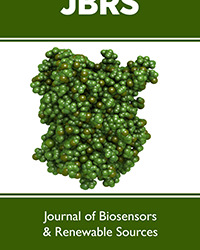
Introduction
Globally, water availability is becoming progressively scarce and by 2025 more than one-third of the world population would face severe water shortage [1,2]. The arid and semi-arid regions of Asia, the Middle-East, and sub-Saharan Africa, which are having a high concentration of the world’s population with a large section living below the poverty line, will be the worst affected areas. While demand for food and other agricultural commodities in these areas is increasing due to fast-growing population, freshwater availability is continuously declining.
Read more about this article: https://lupinepublishers.com/biosensors-renewable-sources/fulltext/artificial-neural-networks-based-modeling-in-sustainable-energy-domain.ID.000105.php
ReadmoreLupinePublishersGoogleScholarArticles:
https://scholar.google.com/citations?view_op=view_citation&hl=en&user=5ql0QHJV55QC&citation_for_view=5ql0QHJV55QC:mVmsd5A6BfQC
#lupine publishers#open access journals#Journal of Biosensors and Renewable Sources#Soil Solar energy#Nuclear thermal
0 notes
Text
The seed includes all the possibilities of the tree…. The seed will develop these possibilities, however, only if it receives proper nourishment and corresponding energies from the sky.
ancient egyptian proverb
#nature#seed#possibility#energy#solar energy#sun#light#moon#nourishment#harmony#balance#soil#water#natural laws#understanding#wisdom#outside and inside#tree#observation#potential#ancient egyptian proverb
12 notes
·
View notes
Text
Green energy is in its heyday.
Renewable energy sources now account for 22% of the nation’s electricity, and solar has skyrocketed eight times over in the last decade. This spring in California, wind, water, and solar power energy sources exceeded expectations, accounting for an average of 61.5 percent of the state's electricity demand across 52 days.
But green energy has a lithium problem. Lithium batteries control more than 90% of the global grid battery storage market.
That’s not just cell phones, laptops, electric toothbrushes, and tools. Scooters, e-bikes, hybrids, and electric vehicles all rely on rechargeable lithium batteries to get going.
Fortunately, this past week, Natron Energy launched its first-ever commercial-scale production of sodium-ion batteries in the U.S.
“Sodium-ion batteries offer a unique alternative to lithium-ion, with higher power, faster recharge, longer lifecycle and a completely safe and stable chemistry,” said Colin Wessells — Natron Founder and Co-CEO — at the kick-off event in Michigan.
The new sodium-ion batteries charge and discharge at rates 10 times faster than lithium-ion, with an estimated lifespan of 50,000 cycles.
Wessells said that using sodium as a primary mineral alternative eliminates industry-wide issues of worker negligence, geopolitical disruption, and the “questionable environmental impacts” inextricably linked to lithium mining.
“The electrification of our economy is dependent on the development and production of new, innovative energy storage solutions,” Wessells said.
Why are sodium batteries a better alternative to lithium?
The birth and death cycle of lithium is shadowed in environmental destruction. The process of extracting lithium pollutes the water, air, and soil, and when it’s eventually discarded, the flammable batteries are prone to bursting into flames and burning out in landfills.
There’s also a human cost. Lithium-ion materials like cobalt and nickel are not only harder to source and procure, but their supply chains are also overwhelmingly attributed to hazardous working conditions and child labor law violations.
Sodium, on the other hand, is estimated to be 1,000 times more abundant in the earth’s crust than lithium.
“Unlike lithium, sodium can be produced from an abundant material: salt,” engineer Casey Crownhart wrote in the MIT Technology Review. “Because the raw ingredients are cheap and widely available, there’s potential for sodium-ion batteries to be significantly less expensive than their lithium-ion counterparts if more companies start making more of them.”
What will these batteries be used for?
Right now, Natron has its focus set on AI models and data storage centers, which consume hefty amounts of energy. In 2023, the MIT Technology Review reported that one AI model can emit more than 626,00 pounds of carbon dioxide equivalent.
“We expect our battery solutions will be used to power the explosive growth in data centers used for Artificial Intelligence,” said Wendell Brooks, co-CEO of Natron.
“With the start of commercial-scale production here in Michigan, we are well-positioned to capitalize on the growing demand for efficient, safe, and reliable battery energy storage.”
The fast-charging energy alternative also has limitless potential on a consumer level, and Natron is eying telecommunications and EV fast-charging once it begins servicing AI data storage centers in June.
On a larger scale, sodium-ion batteries could radically change the manufacturing and production sectors — from housing energy to lower electricity costs in warehouses, to charging backup stations and powering electric vehicles, trucks, forklifts, and so on.
“I founded Natron because we saw climate change as the defining problem of our time,” Wessells said. “We believe batteries have a role to play.”
-via GoodGoodGood, May 3, 2024
--
Note: I wanted to make sure this was legit (scientifically and in general), and I'm happy to report that it really is! x, x, x, x
#batteries#lithium#lithium ion batteries#lithium battery#sodium#clean energy#energy storage#electrochemistry#lithium mining#pollution#human rights#displacement#forced labor#child labor#mining#good news#hope
3K notes
·
View notes
Text
so far the project is going well in that i have my blueprints, lighting, electrical, the bulk of the plumbing, and most of the elevations and models done, but badly in the sense that i now hate looking at it and think the design and floorplan is terrible.
i made it in the sims because autocad renders are ugly and it looks like a school 😭. the lots aren't big enough to show the landscaping (mostly tall trees for windbreaks and shrubbery nearer to the building for fire walls) but this is generally the shape and size, although the windows couldn't be centered without misrepresenting the size of the building.

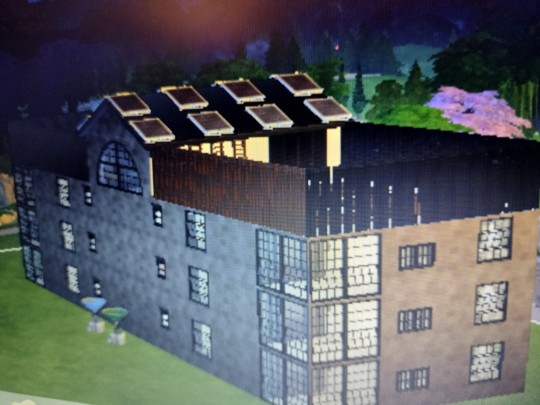
those big windows r supposed to be able to be propped up open for ventilation and lighting alà campers so they'll look cooler when they're open, i'm going to put in flower boxes, and i want to do something funkier with the windbreaks than a fence, but the giant rectangle design is kind of defeating me 😭. i wanted each individual unit to be a rectangle so you can freely assemble them and make a whole complex as needed, but it's so ugly.
there's this one very cool apartment complex in turin, italy, with these sort of support beams shaped like trees, and i wanna copy that, but i don't actually think i NEED support beams of any kind and then it just sort of becomes a carbon copy. maybe the drainage from the roof can be tree shaped? that could actually be kinda cool.
idk it's sort of too late to switch up the floorplan and i AM a 17 year old in a high school engineering class, so nobody is really expecting this to be groundbreaking new concepts for architecture as a whole, just for me to demonstrate that i know how to put together a big project like this, but still. i worked really hard on this and seeing it be so underwhelming is super frustrating. at least the water recycling system is cool.
#its all pretty novel stuff FOR OCALA like nobody in this town has geothermal very few have solar panels etc#so with all the new housing we're building if we did build some apartments incorporating gardens solar energy n geothermal itd be very new#and i think floridians generally are open to like wells and solar power even if everyone here thinks climate change is fake#like i did genuinely spend a lot of time reading abt eco friendly housing in tropical climates for this#and i think the connection between all the dif. systems im using (like the heating/cooling is geothermal n then the same well#provides drinking water while byproduct from cooling/heating the water for ac is used as irrigation in the garden#and rainwater instead of just weighing down the flat roof can be run through the planters sort of like gutters made of soil#its all pretty boring and standard on its own but i think the big picture is pretty cool#and i had fun reading about different forms of architecture from tropical countries and seeing what would work in this specific part of fl
0 notes
Text
Daily household remedies in astrology


Milk for moon remedies 🥛
Keep broom/ vacuum cleaner clean for Saturn and ketu remedies 🧹
Keep your makeup products clean for venus remedies 💄
Throw away unused devices for a good rahu 📺
Avoid using devices in bathroom for a good rahu 🤳
Clean feet before bed for Saturn benefits 👣
Clean your navel for a good solar plexus/5th house 🏷
Buy green purses for good mercury and good finances 💰
Throw away your hair after hair fall into soil for good ketu , as ketu is related to hair 👩🦰
Never eat facing south , as vastu Shastra says it's the direction of the dead people, however if you're providing food to your pitrus south is an effective direction .🥗
Wear gold in your upper body like earrings , nosepin etc for chanelling solar energy and wear silver in the lower body like anklets toering for energy from lunar sources and also creating a magnetic flow from top to bottom.🏅🥈
Find out about the items of your Nakshatra and play extra attention to never lose them , as a jyestha never lose an umbrella , as a punarvasu never lose an earring etc 🌂
As thrifting culture is gaining fame ( personally I love it too 😩 ) clean the clothes you aquire , by Firstly soaking it in water overnight and use some way to cleanse energy , even if you're thrifting avoid too torn items. 👚👖
#astrology#sidereal astrology#astro community#astro notes#tropical astrology#astrology readings#astrology community#astrology placements
632 notes
·
View notes
Text
Good News - July 15-21
Like these weekly compilations? Tip me at $kaybarr1735! (Or check out my new(ly repurposed) Patreon!)
1. Thai tiger numbers swell as prey populations stabilize in western forests

“The tiger population density in a series of protected areas in western Thailand has more than doubled over the past two decades, according to new survey data. […] The most recent year of surveys, which concluded in November 2023, photographed 94 individual tigers, up from 75 individuals in the previous year, and from fewer than 40 in 2007. […] A total of 291 individual tigers older than 1 year were recorded, as well as 67 cubs younger than 1 year.”
2. Work starts to rewild former cattle farm

“Ecologists have started work to turn a former livestock farm into a nature reserve [… which] will become a "mosaic of habitats" for insects, birds and mammals. [… R]ewilding farmland could benefit food security locally by encouraging pollinators, improving soil health and soaking up flood water. [… “N]ature restoration doesn't preclude food production. We want to address [food security] by using nature-based solutions."”
3. Harnessing ‘invisible forests in plain view’ to reforest the world

“[… T]he degraded land contained numerous such stumps with intact root systems capable of regenerating themselves, plus millions of tree seeds hidden in the soil, which farmers could simply encourage to grow and reforest the landscape[….] Today, the technique of letting trees resprout and protecting their growth from livestock and wildlife [… has] massive potential to help tackle biodiversity loss and food insecurity through resilient agroforestry systems. [… The UN’s] reported solution includes investing in land restoration, “nature-positive” food production, and rewilding, which could return between $7 and $30 for every dollar spent.”
4. California bars school districts from outing LGBTQ+ kids to their parents

“Gov. Gavin Newsom signed the SAFETY Act today – a bill that prohibits the forced outing of transgender and gay students, making California the first state to explicitly prohibit school districts from doing so. […] Matt Adams, a head of department at a West London state school, told PinkNews at the time: “Teachers and schools do not have all the information about every child’s home environment and instead of supporting a pupil to be themselves in school, we could be putting them at risk of harm.””
5. 85% of new electricity built in 2023 came from renewables

“Electricity supplied by renewables, like hydropower, solar, and wind, has increased gradually over the past few decades — but rapidly in recent years. [… C]lean energy now makes up around 43 percent of global electricity capacity. In terms of generation — the actual power produced by energy sources — renewables were responsible for 30 percent of electricity production last year. […] Along with the rise of renewable sources has come a slowdown in construction of non-renewable power plants as well as a move to decommission more fossil fuel facilities.”
6. Deadly cobra bites to "drastically reduce" as scientists discover new antivenom

“After successful human trials, the snake venom antidote could be rolled out relatively quickly to become a "cheap, safe and effective drug for treating cobra bites" and saving lives around the globe, say scientists. Scientists have found that a commonly used blood thinner known as heparin can be repurposed as an inexpensive antidote for cobra venom. […] Using CRISPR gene-editing technology […] they successfully repurposed heparin, proving that the common blood thinner can stop the necrosis caused by cobra bites.”
7. FruitFlow: a new citizen science initiative unlocks orchard secrets

“"FruitWatch" has significantly refined phenological models by integrating extensive citizen-sourced data, which spans a wider geographical area than traditional methods. These enhanced models offer growers precise, location-specific predictions, essential for optimizing agricultural planning and interventions. […] By improving the accuracy of phenological models, farmers can better align their operations with natural biological cycles, enhancing both yield and quality.”
8. July 4th Means Freedom for Humpback Whale Near Valdez, Alaska

“The NOAA Fisheries Alaska Marine Mammal Stranding Hotline received numerous reports late afternoon on July 3. A young humpback whale was entangled in the middle of the Port of Valdez[….] “The success of this mission was due to the support of the community, as they were the foundation of the effort,” said Moran. [… Members of the community] were able to fill the critical role of acting as first responders to a marine mammal emergency. “Calling in these reports is extremely valuable as it allows us to respond when safe and appropriate, and also helps us gain information on various threats affecting the animals,” said Lyman.”
9. Elephants Receive First of Its Kind Vaccine

“Elephant endotheliotropic herpesvirus is the leading cause of death for Asian elephants (Elephas maximus) born in facilities in North America and also causes calf deaths in the wild in Asia. A 40-year-old female received the new mRNA vaccine, which is expected to help the animal boost immunity[….]”
10. Conservation partners and Indigenous communities working together to restore forests in Guatemala
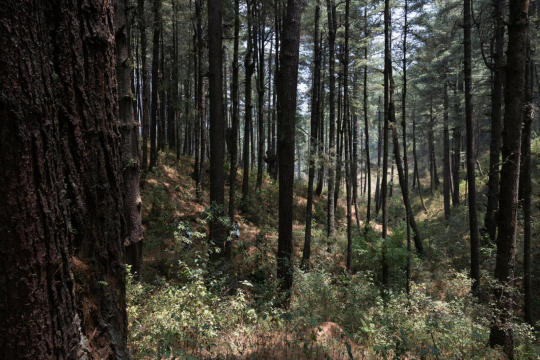
“The K’iche have successfully managed their natural resources for centuries using their traditional governing body and ancestral knowledge. As a result, Totonicapán is home to Guatemala’s largest remaining stand of conifer forest. […] EcoLogic has spearheaded a large-scale forest restoration project at Totonicapán, where 13 greenhouses now hold about 16,000 plants apiece, including native cypresses, pines, firs, and alders. […] The process begins each November when community members gather seeds. These seeds then go into planters that include upcycled coconut fibers and mycorrhizal fungi, which help kickstart fertilization. When the plantings reach about 12 inches, they’re ready for distribution.”
July 8-14 news here | (all credit for images and written material can be found at the source linked; I don’t claim credit for anything but curating.)
#hopepunk#good news#tiger#thailand#habitat#rewilding#food insecurity#forest#reforestation#california#lgbtq#lgbtqia#students#law#trans rights#gay rights#renewableenergy#clean energy#snake#medicine#crispr#citizen science#farming#whale#humpback whale#elephant#vaccine#alaska#guatemala#indigenous
412 notes
·
View notes
Text
The United States solar energy boom is finally taking off - in the worst way. In the Mojave desert and other federal lands across the West, utility-scale installations are putting gigawatt-hours of energy on the board and powering millions of homes. But the designs are sloppy, the labor conditions are horrific, and the environmental damage is incalculable. Ancient joshua trees are being clear cut, endangered desert tortoises are being left for dead, the vast biotic carbon stores of Mojave soils are being upturned, and the reflectivity of enormous expanses of desert are being altered, affecting the planetary climate.
But it doesn't have to be this way. There's a type of energy that requires no fuel and no land. It hardly even needs transmission lines, as it can be built at the site of use: rooftop solar. Every hour of the day, rooftops across the United States soak up enough sun to generate petawatts of power. Estimates for their potential to offset US energy demand range from 13 percent to over 100. Yet at present, only around 2 percent of US energy is generated by rooftop.
And then there's land area that's already been developed. Just by building solar on degraded lands, focusing on superfund sites, reservoirs, and farmland, researchers estimate we could generate more than enough to offset today's national energy demand. While there are points of dispute concerning some projections, the conclusion is clear: between the potential of degraded lands, rooftops, wind, and storage - plus existing hydro, nuclear, and other zero carbon energy sources, there's really no need to tear up the rare and fragile ecosystems of our deserts.
1K notes
·
View notes
Text
GR96
@fusionspruntcityjournal

So how do you produce electricity with living plants? Simply by using the natural processes that already occur. In short: the plant produces organic matter via photosynthesis. Only part of this organic matter is then used for its own growth. The rest is excreted via the roots. Around the roots, bacteria feed on the organic matter and they release electrons. If you’re able to harvest the electrons into an electrode, you can couple the first electrode to a counter-electrode and build an electrical circuit, like in a battery. The electrons flow back into the natural system via the counter-electrode, so it’s completely circular. Because we use the natural processes around the plant, nature is not harmed. It works day and night, summer and winter. It only stops when the plant and its surroundings completely dry up or freeze over.
Sedum Oviferum
Sedum pachyphyllum is a ground-hugging succulent that spreads by rooting fallen stems and leaves. The succulent also goes by the names “Cerise Moonstones” or “Mauve Pebbles”. The short and stumpy round leaves have a light silvery-purple color; positioned at a right angles to the stem and curve upward, which in the wintertime, the tips of said leaves will turn into a notorious red.
Sedum Oviferum is a succulent that is very easy to grow and maintain. It is a resilient plant that can tolerate drought, moist and dry soils, and when given adequate exposure to sunlight and sufficient water, Cerise Moonstones will thrive outdoors. The Sedum Oviferum succulent grows at its best with regular exposure to sunlight. If Mauve Pebbles are planted in an area in a garden that gets plenty of sunlight per day, you will be rewarded with bright coloured leaves and flowers. In winter and early spring, Cerise Moonstones actively grow and produce blooms featuring red-orange petals and sepals that have the same pigmentation as the leaves. The flowers produced by Cerise Moonstones have a bell shape and a sugary fragrance.
Subterranean Clover
Trifolium subterraneum is also known as the subterranean clover (often shortened to sub clover), or subterranean trefoil. The plant's name comes from its underground seed development, a characteristic not possessed by other clovers. It can thrive in poor-quality soil where other clovers cannot survive.
This species is self-fertilizing, unlike most legume forage crops such as alfalfa and other clovers, which are pollinated by insects, especially honeybees. It is also grown in places where the extreme ranges of soil type and quality, rainfall, and temperature make the variable tolerances of sub clover especially useful.
Functionality
GR96 are powered by any plant of choosing on their back pod (the one we are going to discuss has a giant Sedum Oviferum and multiple sub clovers to operate) which is held in place by five strong suction cups. They’re manufactured for community gardens (strictly only one per garden), but they can also be bought by high class citizens for private properties, though at a way bigger cost since they’re financed by the city.
They can use their hands as scissors, shovels, and for watering (hence the big forearms, for storing the water), the latter which they do by dipping their hands in a bucket, opening the valve on their forearms so they can fill them up and releasing the water from the pinholes on their palms. Their “eyes” are actually a screen that can show plenty expressions, but the two circles above that peripheral screen are the real environmental sensors. They also have the same sensors on their ankles for inspecting the lower plants and ground without the need of kneeling, and their feet are shaped in a way so that weight is evenly distributed, lowering the chances of damaging a plant if they were to step on it. The ear like protrusions are small solar panels, used as backup energy (they don’t have any communication properties). Their speaker aka their “voice” is the mohawk-like structure on the top (which also has their series barcode 128 on the lower back), but when they speak there are these strips at the sides of the face mask that light up with the volume. The mask (non removable) has a set of pipes that are used for analyzing the air quality and humidity of the area surrounding them.
#my art#fusionsprunt#fusionsprunt oc#fusionsprunt clover#i’ll reblog this again later with their lore and alt design#the sedum oviferum is a fictional succulent i came up with since i couldn’t find one that i liked lmao#literally said fuck it it’s my oc i make the rules#[slaps a giant plant inside]#the energy gathering segment is based on a real article!#in its current state it can only power small leds#but i like to imagine a future where that energy could power full fledged robots :0
191 notes
·
View notes
Text
So I'm absolutely not an expert on the subject, and this post is just a bunch of thoughts I've been turning over in my head a lot, but: on the subject of Industrial Agriculture, the Earth's carrying capacity, and agroforestry
Writings from people who propose policy changes to secure the future of Earth treat energy use by organisms in (what seems to me like) the most infuriatingly presumptive, simplistic terms and I don't know why or what's wrong or what I'm missing here.
Humans have to use some share of the solar energy that reaches Earth to continue existing.
The first problem is when writers appear to assume that our current use of solar energy via the agricultural system (we grow plants that turns the light into food.) already is maximally efficient.
The second problem is when writers see land as having one "use" that excludes all other uses, including by other organisms.
The way i see it, the thing is, we learned how to farm from natural environments. Plant communities and farms are doing the same thing, capturing energy from the Sun and creating biomass, right? The idea of farming is to make it so that as much as possible of that biomass is stuff that can be human food.
So instead of examining the most efficient crops or even the most efficient agricultural systems, I think we need to examine the most efficient natural ecosystems and how they do it.
What I'm saying is...in agricultural systems where a sunbeam can hit bare dirt instead of a leaf, that's inefficiency. In agricultural systems where the nutrients in dead plant matter are eroded away instead of building the soil, that's inefficiency. Industrial agriculture is hemorrhaging inefficiency. And it's not only that, it's that industrial agriculture causes topsoil to become degraded, which is basically gaining today's productivity by taking out a loan from the future.
I first started thinking about this with lawns: a big problem with monocultures is ultimately that they occupy a single niche.
In the wild, plant communities form layers of plants that occupy different niches in space. So in a forest you have your canopy, your understory, your forest floor with herbaceous plants, and you have mosses and epiphytes, and basically if any sunbeams aren't soaked up by the big guys in the canopy, they're likely to land on SOME leaf or other.
Monocultures like lawns are so damn hard to sustain because they're like a restaurant with one guy in it and 20 empty tables, and every table is loaded with delicious food. And right outside the restaurant is a whole crowd of hungry people.
Once the restaurant is at capacity and every table is full, people will stop coming in because there's no room. But as long as there's lots of room and lots of food, people will pour in!
So a sunny lawn has lots of food (sunlight) and lots of room (the soil and the air above the soil can fit a whole forest's worth of plant material). So nature is just bombing that space with aggressive weeds non-stop trying to fill those niches.
A monoculture corn field has a lot of the same problems. It could theoretically fit more plants, if those plants slotted into a niche that the corn didn't. Native Americans clear across the North American continent had the Three Sisters as part of their agricultural strategy—you've got corn, beans, and squash, and the squash fits the "understory" niche, and the corn provides a vertical support for the beans.
We dump so many herbicides on our monocultures. That's a symptom of inefficient use of the Sun, really. If the energy is going to plants we can't eat instead of plants we can, that's a major inefficiency.
But killing the weeds doesn't fully close up that inefficiency. It improves it, but ultimately, it's not like 100% of the energy the weeds would be using gets turned into food instead. It's just a hole, because the monoculture can't fulfill identical niches to the weeds.
The solution—the simple, brilliant solution that, to me, is starting to appear common throughout human agricultural history—is to eat the weeds too.
Dandelions are a common, aggressive weed. They're also an edible food crop.
In the USA, various species of Amaranth are our worst agricultural weeds. They were also the staple food crop that fed empires in Mesoamerica.
Purslane? Edible. Crabgrass? Edible.
A while back I noticed a correlation in the types of plants that don't form mycorrhizal associations. Pokeweed, purslane, amaranth—WEEDS. This makes perfect sense, because weeds are disaster species that pop up in disturbed soil, and disturbed soil isn't going to have much of a mycorrhizal network.
But, you know what else is non-mycorrhizal? Brassicas—ie the plant that humans bred into like 12 different vegetables including broccoli and brussels sprouts.
My hypothesis is that these guys were part of a Weed Recruitment Event wherein a common agricultural weed got domesticated into a secondary food crop. I bet the same thing happened with Amaranth. I bet—and this is my crazy theory here—I bet a lot of plants were domesticated not so much based on their use as food, but based on their willingness to grow in the agricultural fields that were being used for other crops.
So, Agroforestry.
Agroforestry has the potential for efficiency because it's closer to a more efficient and "complete" plant community.
People keep telling me, "Food forests are nowhere near as efficient as industrial agriculture, only industrial agriculture can feed the world!" and like. Sure, if you look at a forest, take stock of what things in it can be eaten, and tally up the calories as compared to a corn field (though the amount of edible stuff in a forest is way higher than you think).
But I think it's stupid to act like a Roundup-soaked corn field in Kansas amounts to the pinnacle of possible achievement in terms of agricultural productivity. It's a monoculture, it's hard to maintain and wasteful and leaves a lot of niches empty, and it's destroying the topsoil upon which we will depend for life in the future.
I think it's stupid to act like we can guess at what the most efficient possible food-producing system is. The people that came before us didn't spend thousands of years bioengineering near-inedible plants into staple food crops via just waiting for mutations to show up so that we, possessing actual ability to alter genes in a targeted way, could invent some kind of bullshit number for the carrying capacity of Earth based on the productive capability of a monoculture corn field
Like, do you ever think about how insane domestication is? it's like if Shakespeare's plays were written by generation after generation of people who gave a bunch of monkeys typewriters and spent every day of their lives combing through the output for something worth keeping.
"How do we feed the human race" is a PAINFULLY solvable problem. The real issue is greed, politics, and capitalism...
...lucky for us, plants don't know what those things are.
1K notes
·
View notes
Text

Aura colours and their meaning.
The aura is an extension of a person’s personality and emotional, mental and physical landscape, so it will change from day to day. It can be affected by external factors as well as the general disposition and character of the individual.
There are no hard and fast rules as to what these visual variances ‘mean’, as, with all psychic practices, it depends on the intuition and knowledge of the reader. But there are certainly common themes. For instance, those who practice yoga tend to have a ‘still’ aura or people with serious illness have a fainter aura than someone vital. Moreover, auras tend to have a ‘texture’ to them. They may be sparkly, treacly, in lines, waves or arcs.
Below, I have given a rough guide to how you might interpret auric colours only, but it is no mean a fixed manual:
The Aura Colors Meaning Chart:
Red ~ Pertains to circulation, the heart and the physical body. In its higher aspect, it is an indicator of a healthy ego, stability and being strong-willed. In its lowest aspect, red energy can give way to anger, unforgiving, anxiety or nervousness.
Orange ~ points to the reproductive organs and feelings. It is the colour of vigour, vitality and enthusiasm. In its higher aspect, orange energy shows creativity, confidence and gregariousness. In its lowest aspect, it can give way to stress and addictions.
Yellow ~ represents life energy – qi or prana. The colour of optimism, awakening, inspiration and intelligence. It has no lower aspects.
Green ~ connects to the heart centre and lungs. It is the comfortable and healthy colour of nature, representing growth, balance, healing, and depicting a love for all sentient beings and Mother Earth.
Blue ~ Pertains to the throat and the thyroid and is therefore indicative of communicators. Writers, public speakers and linguists will often have a lot of blue in their auric field. It is also a cool, calm and collected energy.
Indigo ~ Pertains to the third eye and therefore is a colour of deep feelings, intuition and sensitivity.
Violet/Lavender ~ Relating to the crown, pineal gland and the nervous systems. It is the most sensitive colour in the aura. People with a lot of violet in their auras are usually highly artistic, psychic, intuitive, visionary and magical.
“The aura is an extension of a person’s personality and emotional, mental and physical landscape, so it will change from day to day.”
Other Aura Colours:
Turquoise ~ is associated with the immune system and usually found in the auras of healers and therapists. It is a sensitive, compassionate colour.
Silver ~ pertains to spiritual and physical abundance. A lot of bright silver in an aura may indicate a spiritual awakening or financial gain.
Gold ~ typical of divine protection and enlightenment. This colour points towards strong spiritual and universal guidance, intuition, wisdom and inner peace.
Black ~ points towards pulling, capturing and transforming energy. It can indicate unreleased anger, grief or health problems. It also shows an unforgiving nature (to themselves and others) and possible past-life issues that remain unresolved.
White ~ linked to protection and deflecting other energies. Flashes of white within the auric field often signal that angels are nearby. As with most associations with white, it symbolizes purity, truth and a healthy individual.
Earth Tones/Brown ~ Colours of soil, wood, minerals and plants highlights very grounded energy and someone who works with the earth, such as a gardener or farmer. However, a more brownish hue can point to greediness, self-absorption or ignorance in its lowest aspect.
Rainbow ~ auras with stripes of colour emanating as beams of light from the hands, heart, or head indicate someone who is a healer.
Solar Aura
Peter Solarz
70 notes
·
View notes
Text
DID LIFE EXIST ON VENUS??
Blog#429
Wednesday, August 21st 2024.
Welcome back,
The hellish planet Venus may have had a perfectly habitable environment for 2 to 3 billion years after the planet formed, suggesting life would have had ample time to emerge there, according to a new study.
In 1978, NASA's Pioneer Venus spacecraft found evidence that the planet may have once had shallow oceans on its surface. Since then, several missions have investigated the planet's surface and atmosphere, revealing new details on how it transitioned from an "Earth-like" planet to the hot, hellish place it is today.

It's believed that Venus may have been a temperate planet hosting liquid water for 2 to 3 billion years before a massive resurfacing event about 700 million years ago triggered a runaway greenhouse effect, which caused the planet's atmosphere to become incredibly dense and hot.
Researchers from NASA's Goddard Institute for Space Studies shared a series of five simulations that show what Venus' environment would be like based on different levels of water coverage.

All five of the simulations suggest Venus may have been able to maintain stable temperatures, ranging from a low of 68 degrees Fahrenheit (20 degrees Celsius) to a high of 122 degrees Fahrenheit (50 degrees Celsius), for about 3 billion years, according to a statement from the Europlanet Society.

"Our hypothesis is that Venus may have had a stable climate for billions of years," Michael Way, one of the study researchers, said in the statement. "It is possible that the near-global resurfacing event is responsible for its transformation from an Earth-like climate to the hellish hot-house we see today."
Under stable climate conditions, Venus would have been able to support liquid water and, in turn, possibly allow life to emerge. In fact, if the planet hadn't experienced the resurfacing event, it might have remained habitable today, the researchers said.
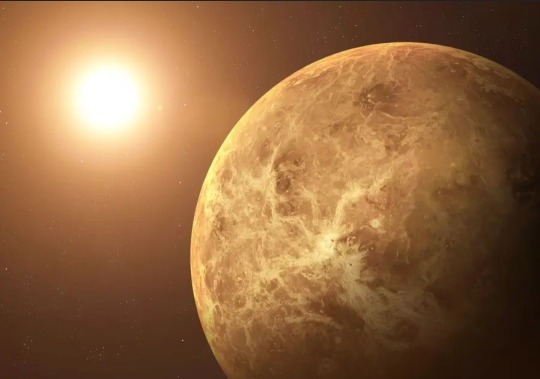
However, the resurfacing event triggered a series of incidents that caused a release, or outgassing, of carbon dioxide stored in the rocks of the planet. As a result, Venus' atmosphere became too dense and hot for life to survive.
Creating the different simulations involved adapting a 3D general-circulation model, which accounted for atmospheric compositions as they were 4.2 billion years ago and 715 million years ago, and as they are today. The model also accounts for the gradual increase in solar radiation, as the sun gets warmer over the course of its lifetime.

In addition, three of the five scenarios assumed the topography of Venus was similar to what it is today. In these scenarios, the ocean ranged from a shallow depth of about 30 feet (10 meters) to about 1,000 feet (310 m), with a small amount of water locked in the soil.
Originally published on https://www.space.com
COMING UP!!
(Saturday, August 24th, 2024)
"HOW POWERFUL IS DARK ENERGY??"
#astronomy#outer space#alternate universe#astrophysics#universe#spacecraft#white universe#space#parallel universe#astrophotography#venus
54 notes
·
View notes
Text

Happy Solarpunk Aesthetic Week and Winter Solstice! ❄️
While we do celebrate here, we don't actually experience winter in my region, or any of the classic four seasons! The weather here is basically a coin toss between searing heat and torrential rain lol. So while I was musing over how to adapt a solarpunk aesthetic to a tropical lifestyle, I came up with this!
Lengthy explanations and chaotic ideas below:


Disclaimer: I am not a science-y person, so I'm not sure how any of these would technically work or what materials would go into making them. Hopefully one day someone could figure it out, but I'm just having fun sharing these ideas for now :)
-----
What works well both in harsh sunlight and heavy downpours, plus is already something that people here use everyday? Umbrellas! How cool would it be to have an umbrella that absorbs sunlight during the day, and turns it into a personal spotlight at night? Or perhaps it could absorb and store large amounts of rainwater, to be re-used later or released somewhere more useful?
My main inspiration for this is the bamboo. This plant already plays a huge role in our lives here -- culturally, economically, and from what I recently learned, ecologically too! Our region suffers from floods often, and bamboo can help to control the flow of water, for example through their roots providing a barrier against soil erosion, or their ability to store large amounts of water and release it gradually during drier seasons. (And that's just one of the many reasons why bamboos are awesome and solarpunky!) I thought it would be cool to have water stored in the 'bamboo nodes' of the umbrella shaft, which could then be detached and used individually, or as components in other tech!
I chose the Amazonian lily pad as the canopy design because 1) it looks big enough to cover a person, 2) it has a wide surface for solar panels to 'photosynthesize' energy, 3) its container-like shape looks as though it could hold rainwater like a funnel while it trickles into the shaft, and 4) it just looks really pretty! Realistically, this canopy might not be able to do everything at once, so I'm hoping for this tech to be modular and highly customizable -- as in, you could replace this 'lily pad' with something else that serves a different function! I did play around with some other designs, here they are hehe
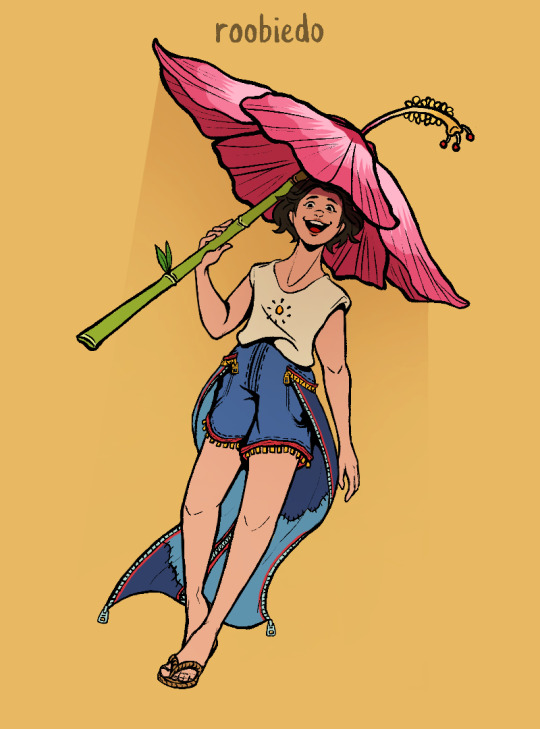

Hibiscus: Our national flower! Have these bad boys growing in my yard so I thought why not. Not sure what functions it would have yet... perhaps the pistil could be a sensor for gathering weather data? Or maybe the anthers are little lights? Maybe it attracts BEES???
Mushroom: Not familiar with the fungi in my area yet so I went with the classic Amanita. Though now I'm kinda regretting because! Wouldn't it be so cool and lunarpunky to design it based on a bio-luminescent mushroom, so it would make sense for the umbrella to glow in the dark? AGH missed opportunities ;;
-----
Anyway while I was designing the umbrella I thought about giving the model a cool fit too, so tadaaa! A customizable pair of pants that can be worn as a shorts + half-skirt/sarong combo during hot weather, or extended to become a full pair of jeans during colder/rainy times! I used zippers as the connectors because they seem easy to sew on and I like the punky vibe it adds to the outfit. HOWEVER, I'm realising that might be inconvenient or way too time consuming for some people. Maybe buttons, magnets or hook-and-loop fasteners would be easier?
As for the shirt, idk that was just for fun. Maybe it changes colour/design based on the surrounding temperature?
-----
So YEAH that was my longer-than-expected idea dump for this week! Thank you for reading <3 If you have any thoughts or ways of expanding on these ideas please please please share them with me I'm just really excited to see what people think waaaaa!!! ok bye stay hydrated
#art#artists on tumblr#solarpunk#solarpunk aesthetic week#winter solstice#no im not late im not I M NOT#fashion#roobiedoodle#tl simmer#i did not intend for it to be her but she looks similar enough! should use my OCs as models more often actually
188 notes
·
View notes
Link
The China National Space Administration (CNSA) has put out a call for international and industry partners to contribute science payloads to its Chang’e-8 lunar lander, set for launch to the Moon in 2028. The mission, which will involve a lander, a rover, and a utility robot, will be China’s first attempt at in-situ resource utilization on the Moon, using lunar regolith to produce brick-like building materials. Just like NASA’s Artemis plans, the CNSA’s plans for the Moon are targeted at the Lunar south pole, which is expected to be rich in useable resources, especially water. The presence of these resources will be vital for long-term human activity on the lunar surface. Possible landing sites for Chang’e-8 include Leibnitz Beta, Amundsen crater, Cabeus crater, and the ridge connecting the Shackleton and de Gerlache craters, according to a presentation by Chang’e-8 chief deputy designer in October 2023. Chang’e-8 will be the last CNSA robotic mission to be launched before construction begins on the International Lunar Research Station, China’s crewed moonbase being planned in collaboration with Russia’s Roscosmos. That makes Chang’e-8’s attempt to create building materials out of regolith a vital proof-of-concept for their lunar aspirations. In order to make moon-bricks, the lander will carry an instrument that uses solar energy to melt lunar soil and turn it into useable parts at a speed of 40 cubic cm per hour. Alongside the regolith processing equipment, the lander will be equipped with an array of science instruments, including cameras, a seismometer to detect moonquakes, and an x-ray telescope. Part of the mission will focus on moon-based Earth observation, with several instruments designed to monitor Earth’s atmosphere and magnetosphere. The rover, meanwhile, will carry ground penetrating radar, cameras, a mineral analyzer, and tools for collecting and storing samples (leaving open the possibility of future missions to retrieve the samples). The utility robot is a key piece of the mission, but CNSA isn’t developing it in-house. Instead, the space agency is seeking proposals from partners interested in developing it as a piggyback payload to ride alongside the rest of Chang’e-8. According to the call for proposals, the 100kg, battery-powered robot will need to be able to “capture, carry and place items, shovel, and transfer lunar soil.” It will also need to be able to travel at 400m per hour. There is room for an additional 100kg of piggyback payloads besides the robot, for which full proposals are expected to be submitted later this year. While planning for Chang’e 8 is ongoing, the CNSA has two additional robotic moon missions in the works for the near future. The first, Chang’e-6, will launch this spring, and aims to return a regolith sample from the lunar far side (a never before accomplished feat). The next mission is planned for 2026, when Chang’e-7 will carry out a geological examination of the permanently shadowed craters scattered around the Moon’s south pole. The post China's Chang'e-8 Mission Will Try to Make Bricks on the Moon appeared first on Universe Today.
95 notes
·
View notes
Text
"Amsterdam’s roofs have just been converted into a giant sponge that will make the city more climate resilient.
The Dutch have always been famous for their ability to control water, born out of the necessity of their homeland, much of which is below sea level.
Now, their expert water management skills are transforming the city skyline in the capital city of Amsterdam from one of terracotta tile, concrete, and shingles into green grass and brown earth.
It’s part of a new climate-resiliency trend in architecture and civic planning known as the ‘sponge city concept,’ in which a garden of water-loving plants, mosses, and soil absorbs excess rainwater before feeding it into the building for use in flushing toilets or watering plants on the ground.
If heavy rains are predicted, a smart valve system empties the stored rainwater into the municipal storm drains and sewers in advance of the weather, allowing the roof to soak up water and reduce flooding in the city.
In this way, the rooftops of buildings can be wrung out and filled up just like a sponge.
In Amsterdam, 45,000 square meters, or 11 acres of flat metropolitan rooftops have already been fitted with these systems, and the contracting firms behind the technology say they make sense in dry climates like Spain just as much as in wet climates like Amsterdam...
A 4-year project of different firms and organizations called Resilio, the resilient network for smart climate adaptive rooftops, rolled out thousands of square meters of sponge city technology into new buildings. As with many climate technologies, the costs are high upfront but tend to result in savings from several expenditures like water utilities and water damage, over a long-enough time horizon...
All together, Amsterdam’s sponge capacity is over 120,000 gallons.
“We think the concept is applicable to many urban areas around the world,” Kasper Spaan from Waternet, Amsterdam’s public water management organization, told Wired Magazine. “In the south of Europe–Italy and Spain–where there are really drought-stressed areas, there’s new attention for rainwater catchment.”
Indeed the sponge city concept comes into a different shade when installed in drought-prone regions. Waters absorbed by rooftops during heavy rains can be used for municipal purposes to reduce pressure on underground aquifers or rivers, or be sweated out under the Sun’s rays which cools the interior of the building naturally.
Additionally, if solar panels were added on top of the rooftop garden, the evaporation would keep the panels cooler, which has been shown in other projects to improve their energy generation.
“Our philosophy in the end is not that on every roof, everything is possible,” says Spaan, “but that on every roof, something is possible.”
Matt Simon, reporting on the Resilio project for Wired, said succinctly that perhaps science fiction authors have missed the mark when it came to envisioning the city of the future, and that rather than being a glittering metropolis of glass, metal, and marble as smooth as a pannacotta, it will look an awful lot more like an enormous sculpture garden."
-via Good News Network, May 15, 2024
#amsterdam#netherlands#green roof#blue roof#city planning#urban#urban landscape#flood#climate change#climate action#climate emergency#climate hope#solarpunk#hope posting#go green#eco friendly#climate adaptation#sponge city#urban planning#good news#hope#rooftop garden
2K notes
·
View notes
Text
Good News - August 15-21
Like these weekly compilations? Tip me at $kaybarr1735 or check out my new(ly repurposed) Patreon!
1. Smart hives and dancing robot bees could boost sustainable beekeeping
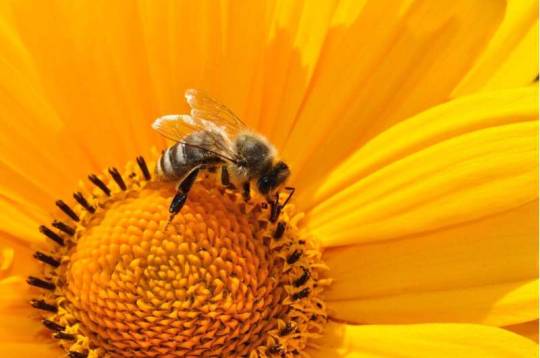
“[Researchers] developed a digital comb—a thin circuit board equipped with various sensors around which bees build their combs. Several of these in each hive can then transmit data to researchers, providing real-time monitoring. [… Digital comb] can [also] be activated to heat up certain parts of a beehive […] to keep the bees warm during the winter[…. N]ot only have [honeybee] colonies reacted positively, but swarm intelligence responds to the temperature changes by reducing the bees' own heat production, helping them save energy.”
2. Babirusa pigs born at London Zoo for first time

“Thanks to their gnarly tusks […] and hairless bodies, the pigs are often called "rat pigs" or "demon pigs” in their native Indonesia[….] “[The piglets] are already looking really strong and have so much energy - scampering around their home and chasing each other - it’s a joy to watch. They’re quite easy to tell apart thanks to their individual hair styles - one has a head of fuzzy red hair, while its sibling has a tuft of dark brown hair.””
3. 6,000 sheep will soon be grazing on 10,000 acres of Texas solar fields

“The animals are more efficient than lawn mowers, since they can get into the nooks and crannies under panel arrays[….] Mowing is also more likely to kick up rocks or other debris, damaging panels that then must be repaired, adding to costs. Agrivoltaics projects involving sheep have been shown to improve the quality of the soil, since their manure is a natural fertilizer. […] Using sheep instead of mowers also cuts down on fossil fuel use, while allowing native plants to mature and bloom.”
4. Florida is building the world's largest environmental restoration project

“Florida is embarking on an ambitious ecological restoration project in the Everglades: building a reservoir large enough to secure the state's water supply. […] As well as protecting the drinking water of South Floridians, the reservoir is also intended to dramatically reduce the algae-causing discharges that have previously shut down beaches and caused mass fish die-offs.”
5. The Right to Repair Movement Continues to Accelerate

“Consumers can now demand that manufacturers repair products [including mobile phones….] The liability period for product defects is extended by 12 months after repair, incentivising repairs over replacements. [… M]anufacturers may need to redesign products for easier disassembly, repair, and durability. This could include adopting modular designs, standardizing parts, and developing diagnostic tools for assessing the health of a particular product. In the long run, this could ultimately bring down both manufacturing and repair costs.”
6. Federal Judge Rules Trans Teen Can Play Soccer Just In Time For Her To Attend First Practice

“Today, standing in front of a courtroom, attorneys for Parker Tirrell and Iris Turmelle, two transgender girls, won an emergency temporary restraining order allowing Tirrell to continue playing soccer with her friends. […] Tirrell joined her soccer team last year and received full support from her teammates, who, according to the filing, are her biggest source of emotional support and acceptance.”
7. Pilot study uses recycled glass to grow plants for salsa ingredients

“"We're trying to reduce landfill waste at the same time as growing edible vegetables," says Andrea Quezada, a chemistry graduate student[….] Early results suggest that the plants grown in recyclable glass have faster growth rates and retain more water compared to those grown in 100% traditional soil. [… T]he pots that included any amount of recyclable glass [also] didn't have any fungal growth.”
8. Feds announce funding push for ropeless fishing gear that spares rare whales

“Federal fishing managers are promoting the use of ropeless gear in the lobster and crab fishing industries because of the plight of North Atlantic right whales. […] Lobster fishing is typically performed with traps on the ocean bottom that are connected to the surface via a vertical line. In ropeless fishing methods, fishermen use systems such an inflatable lift bag that brings the trap to the surface.”
9. Solar farms can benefit nature and boost biodiversity. Here’s how

“[… M]anaging solar farms as wildflower meadows can benefit bumblebee foraging and nesting, while larger solar farms can increase pollinator densities in surrounding landscapes[….] Solar farms have been found to boost the diversity and abundance of certain plants, invertebrates and birds, compared to that on farmland, if solar panels are integrated with vegetation, even in urban areas.”
10. National Wildlife Federation Forms Tribal Advisory Council to Guide Conservation Initiatives, Partnerships

“The council will provide expertise and consultation related to respecting Indigenous Knowledges; wildlife and natural resources; Indian law and policy; Free, Prior and Informed Consent[… as well as] help ensure the Federation’s actions honor and respect the experiences and sovereignty of Indigenous partners.”
August 8-14 news here | (all credit for images and written material can be found at the source linked; I don’t claim credit for anything but curating.)
#hopepunk#good news#honeybee#bees#technology#beekeeping#piglet#london#zoo#sheep#solar panels#solar energy#solar power#solar#florida#everglades#water#right to repair#planned obsolescence#trans rights#trans#soccer#football#recycling#plants#gardening#fishing#whales#indigenous#wildlife
117 notes
·
View notes
Text
Solar farms don’t just have to be about low carbon electricity, they could also help reverse biodiversity decline. Under appropriate management and the right policies, solar farms have the potential to deliver benefits for nature and climate.
Our team’s research on solar farms across the UK shows that these energy facilities can boost local pollinator populations and enhance pollination services to adjacent crops. For instance, managing solar farms as wildflower meadows can benefit bumblebee foraging and nesting, while larger solar farms can increase pollinator densities in surrounding landscapes compared to smaller sites managed as turf grass.
Solar farms have been found to boost the diversity and abundance of certain plants, invertebrates and birds, compared to that on farmland, if solar panels are integrated with vegetation, even in urban areas.
Solar farms can also deliver multiple “ecosystem services” in addition to biodiversity conservation, including food production and support for rural activities such as recreation.
Yet, as with any changes, there will be winners and losers. Some species, such as bats, find it harder to forage for insects and travel along protected corridors of habitat due to to the presence of solar farms. The jury is still out on whether solar farms change the soil’s capacity to store carbon. With clearer understanding of how different species respond to the presence of solar farms, the design, location and management of these facilities can be adapted accordingly to benefit nature.
Solar farms may challenge some deeply held perceptions in the UK of a cultural “green” countryside dotted with lush farmlands in which wildlife co-exist in apparent harmony with human-dominated land uses.
However, centuries of agricultural intensification have pushed several species and habitats to the brink in the UK, a nation that’s been highlighted as one of the most nature-depleted countries in the world.
12 August 2024
127 notes
·
View notes